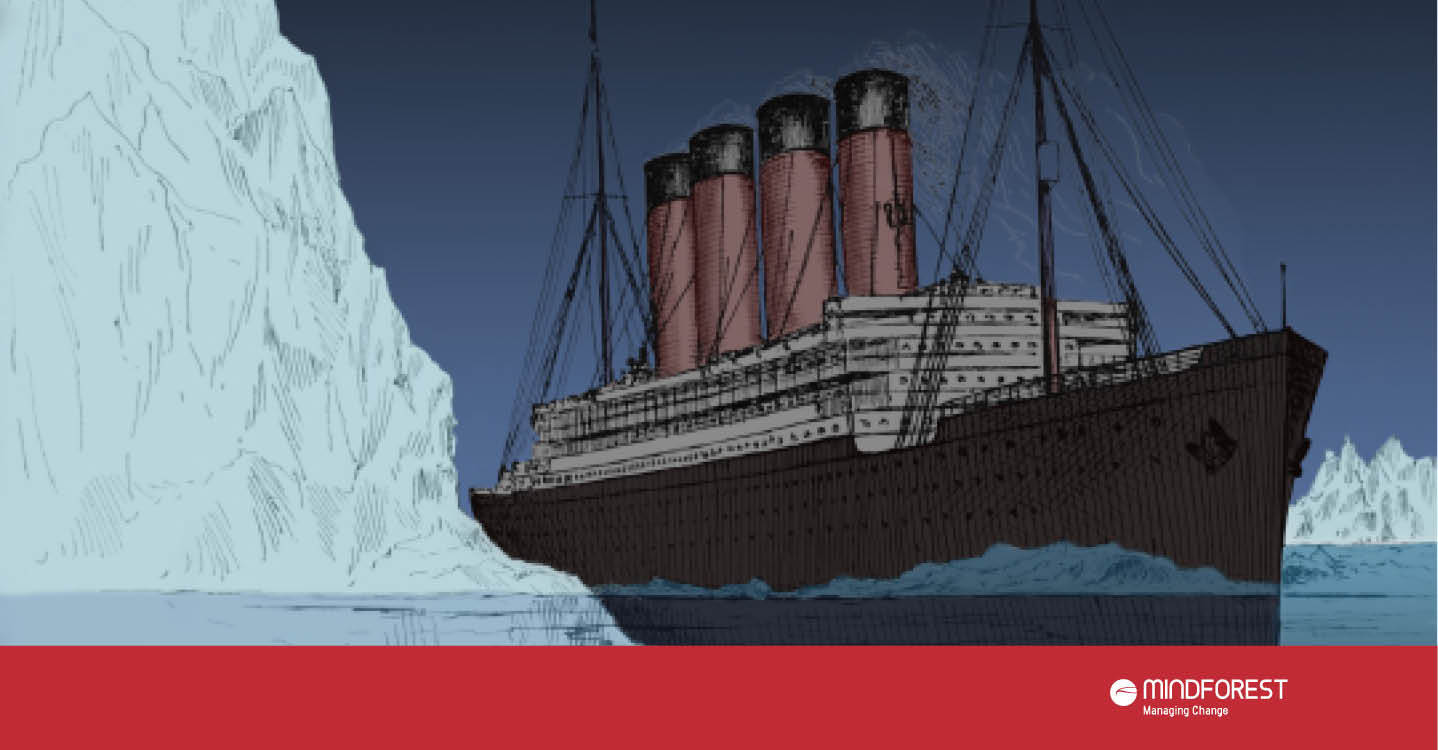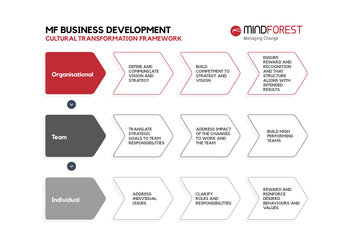What Titanic can teach us about employer branding and company culture

When looking at attracting and engaging new talents to your company your employer brand plays a crucial role.
Nonetheless while the employer brand functions as an external window of your company, it needs to reflect the true internal culture in order to be appropriate and trustworthy.
So, what exactly is the relation between the two and why is it so important that they are aligned?
First of all, let’s specify what we mean by both employer branding and company culture:
• An employer brand is your organisation’s reputation as an employer and is shaped by the employee value proposition (EVP)1.
Whether you decide to manage it actively or not, all companies have an employer brand, which plays an impressive role in building a reputation.
• According to Harvard Business Review a company culture is “consistent, observable patterns of behaviours in organisations” or as Aristotle said: “We are what we repeatedly do”.2
These behaviours can be formal and informal and define the core culture as well as influence how people think, feel and act at work.
The importance of a truthful employer brand
It is a fact that your employer brand is based on the perspectives of both internal and external talent. It sets expectations and promises for what you will deliver as an employer. In other words, the employer brand forms the psychological contract between an employee and the employer. This psychological contract first developed by organisational scholar Denise Rousseau, includes informal arrangements, mutual beliefs, common ground and perception. Together with the legal employment contract, the psychological contract defines the employer – employee relationship.3
If the employer brand is “wrongly” communicated, it can be perceived as a violation of the (unwritten) psychological contract and can hence damage the relationship between employer and employee leading to disappointment, disengagement and reduced performance.
The opposite is of course also true: a strong and inspirational employer brand in alignment with the actual internal workplace culture leads to long-term engagement, loyalty and increased performance.
Culture’s role when creating your employer brand
The above example showcases the importance of getting both employer branding and culture right – at the same time.
So how do we shape and or change our culture to truly shine through and support our employer branding?
Culture is an impressively strong component of an organisation. Just think of the words of Peter Drucker: “Culture eats strategy for breakfast”. The truth is that you can be as intentional as you want to be in attaining your goals and sticking to procedures. Culture makes or breaks everything. It has the power and size of an iceberg, where only a small part – the formal part – is visible. What shapes and drives it is the invisible part below the waterline. It’s the informal power of beliefs, behaviour and unwritten rules.
Look inside (for what) to showcase outside
When aligning culture and employer branding, you need to take an introspective look to shape both to ensure they are both linked to and aligned with the company’s values, purpose and vision.
A universal and well-rounded understanding of your company’s cultural drivers and the forms they take, will not only help you to build a better work environment. It will also serve to increase employee satisfaction and retention making them brand ambassadors for you, whilst also boosting productivity and performance thanks to happy and engaged team-members.
Cultural attention at three levels
Whether you are looking to change or to anchor your culture, you will need to operate attentively and continuously at three levels, while linking values and informal beliefs and behaviours to the formalised purpose and vision of your company:
(Graphic adapted from Harver)4

At Organisational level:
In most companies, culture is “institutionalised” and with time becomes woven into the DNA of the company shaping both its formal and informal systems and structures. This is why whether you are trying to change and “renew” your culture or to strengthen an existing one, it will constantly need to be realigned with both the overall purpose, vision and strategy at an organisational level. In our case of external alignment, it needs to be translated into the employer brand, lived by leadership and communicated and committed to at all levels within the structure.
At Team level:
From the organisational level, the overall changes or anchoring needs to be translated into strategic goals and responsibilities at team level, while addressing their impact on work and the way the team functions.
At Individual level:
There is a common tendency for individuals to resist change. This explains why when changing or anchoring an existing culture, while communicating at an organisational and team level, one still needs to address concerns and issues at an individual level. By clarifying impacts, roles and responsibilities, you help to reinforce desired behaviours, beliefs and values aligned with the overall values, purpose, vision and strategy of the company.
The art and science of cultural change
As strategic management consultant Harald Schroeder puts it: “A successful implementation of a culture change initiative requires the ability to effectively engage and involve a variety of stakeholders such as employees, customers and suppliers.”5
Cultural change requires both art and science. Or in other words, we need not only to pay attention to hard skills, but even more so to soft and interpersonal skills.
Looking inside your organisation you need to pass through five stages, requiring different art and science skills:
Reality Check to analyse the status quo and identify whether your business and employees are ready and prepared to embark on the cultural change initiative and where additional skills or external help might be required.
Diagnosis to review the existing culture and identify which changes should be put in place to support the new strategy and/or employer brand.
Design of appropriate methods and strategies to use to promote the new cultural norms and behaviours, including developing a plan and designing tools and initiatives to support the implementation process.
Implementation of the identified and designed tools, techniques, strategies and initiatives to secure awareness and involvement among all team members and reduce individual resistance to change.
Adjustment and Reinforcement to optimise the tools, techniques, strategies and initiatives designed to achieve the desired outcome.
Watch out for the cultural iceberg to avoid turning your company into Titanic II
To be credible both inside and outside your company, cultural change and alignment with the desired employer brand can be a long and slow process. It requires patience and its success depends on factors and adjustments at all organisational levels, which all need to be taken into account.
It expects you to steer attentively, adapt continuously and watch out for any visible and invisible dangers ahead.
This is why in order to ensure your employer brand will not sink, you need to judge the strengths of your cultural iceberg correctly and change accordingly.
Quellen
[1] Minchington, 2005: Employee value proposition is set of associations and offerings provided by an organization in return for the skills, capabilities and experiences an employee brings to the organisation.
[2] https://hbr.org/2013/05/what-is-organizational-culture [05.02.2021]
[3] https://www.hrzone.com/hr-glossary/what-is-a-psychological-contract [05.02.2021]
[4] https://harver.com/blog/cultural-transformation/ [05.02.2021]
[5] https://www.cmc-global.org/content/cultural-transformation-%E2%80%93-art-and-science [05.02.2021]
